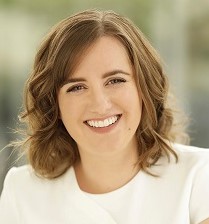Child Psychology and the News
Utilising child psychology to understand children’s interactions with the news has become a more pressing issue. The last few years have been tough on everyone. From lockdowns, mandates, and vaccines, it has raged across society. More recently we’ve stumbled into a period of international conflict and natural disasters devastating our world. To be honest, as I sit here and write this, I almost feel personally numb to it all there has just been so much. What I want to do with you though, is take a minute and think about the news reports you’ve been watching lately, some of the pictures and some of the words you may have heard – imagine you’re 6 years old.
It’s not uncommon for the word “death rates” to be thrown around in the last few years often with numbers in the hundred-of-thousands (and growing) – that’s a big number for a 6-year-old. I remember watching a news report of people burning bodies in India because of the pandemic – what’s this like seeing and hearing as a 6-year-old? Thinking about the last few months: we’ve had tanks rolling down the main street, missiles blowing up an apartment building, families crying in bomb shelters while the air-raid alarm goes off, and gunfire in the background of the journalist – what does our 6-year-old think? And to top it off, the houses are flooding, and the family car is floating down the local river where they were riding their bike alongside it only yesterday.
This is what is being broadcast across our news. Just describing it, I’d probably give it an MA+ rating, but this is being shown at 11 am, 4 pm and 6 pm…..times when our children are often running around the house, wide awake and likely wanting to watch some television. Now, don’t get me wrong, I’m not against you watching the news, no I’m not getting into that debate with you. My question is, how does it impact them and what can you do about it? I have had numerous conversations with young people over the past 3 years who have come into my office upset over information they have seen or heard while the family was engrossed in the news, oblivious as to how it was impacting their beautiful minds.
What is Vicarious Trauma?
Everyone has heard about how people are impacted when directly exposed to trauma, but what happens when that exposure to trauma is more indirect? Vicarious trauma refers to indirect exposure to traumatic stimuli that can be difficult or disturbing to the individual. Another way to describe it is Secondary Traumatic Stress. This type of trauma is actually very common in the helping professions and emergency services as they are exposed to quite distressing information through their jobs. More recently, however, we are beginning to wonder whether this type of trauma is working its way into our lives through the television screen, specifically – the news.
How will Vicarious Trauma Impact My Child?
At its most intense point, vicarious trauma can result in a full diagnosis under child psychology of Post Traumatic Stress Disorder (PTSD), but there’s a lot of other negative impacts that can take place without the seriousness of this diagnosis. For example, other symptoms that may appear in your child include:
- Anxiety
- Psychosomatic symptoms of anxiety, for example, headaches and sore stomachs.
- Irritability and anger.
- Nightmares. In the case of children, they may start sneaking into their parent’s bed when this is something they never did before.
- Obsessive thoughts about events happening in the future.
- School avoidance.
- Separation anxiety.
- Difficulty with attention and concentration.
- Insomnia.
- Hyper-vigilance (an elevated state of assessing for possible threat in the environment).
What can we do?
So, the question becomes, what do we do now? This becomes a balance of considering how we meet our own needs as adults and protect the well-being of our children.
- Is there a time you could watch the news when the kids aren’t around or are in bed?
- Perhaps there is something else they could be doing in another room?
- Could you watch it online and wear headphones?
The thing to remember is that even with all these preventative measures, we can’t wrap our children in a bubble. They will pick it up somewhere, the radio is possible as is the school playground and with those little fingers learning at such a young age how to work an iPad or a phone it won’t take much for a news report to pop up in front of them. As a parent, it is important that you take the time to talk to your children about what is happening in the world. Let them ask those questions and express their concerns. However minor it may seem to you or I, it has had a significant enough impact to worry your child and they need your help (with perhaps a child psychology professional) and support to process it.
Author: Sharyn Jones, B Psych (Hons). 
Sharyn Jones is a Brisbane psychologist with 10 years of experience working with adults, adolescents, children and their parents. Using a combination of cognitive behavioural and solution-focused therapies, she aims to facilitate positive changes in clients’ lives so that they can achieve and obtain their desired goals.
To make an appointment try Online Booking. Alternatively, you can call Vision Psychology Brisbane on (07) 3088 5422.
References:
Fisher, P. (2022). Defining Vicarious Trauma and Secondary Traumatic Stress. Downloaded from https://www.tendacademy.ca/resources-2/defining-vicarious-trauma-and-secondary-traumatic-stress/